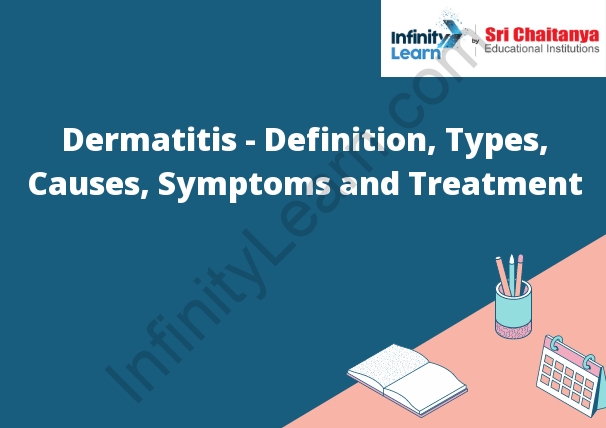Table of Contents
What is Dermatitis?
Dermatitis is a general term used to describe inflammation of the skin. There are many different types of dermatitis, each with its own set of symptoms. The most common type of dermatitis is eczema, which is characterized by itchy, dry skin. Other types of dermatitis include contact dermatitis, seborrheic dermatitis, and atopic dermatitis.
Dermatitis is a skin condition that is characterized by inflammation and itchiness. There are many different types of dermatitis, each with its own set of symptoms. The most common type of dermatitis is atopic dermatitis, which is caused by a combination of environmental and genetic factors. Other types of dermatitis include contact dermatitis, seborrheic dermatitis, and nummular dermatitis.
Dermatitis can be a very uncomfortable condition, and it can also be quite costly to treat. The best way to treat dermatitis is to identify the type of dermatitis you have and then use the appropriate treatment. Some common treatments for dermatitis include topical medications, oral medications, phototherapy, and immunotherapy.
If you think you might have dermatitis, it is important to see a doctor for diagnosis and treatment. Ignoring dermatitis can lead to worsening symptoms and even infection. With the right treatment, most people with dermatitis can achieve relief from their symptoms and improve their quality of life.

Types of Dermatitis
ermatitis is a skin condition that is typically characterized by inflammation, itching, and redness. There are several different types of dermatitis, each of which has its own unique set of symptoms.
The most common type of dermatitis is contact dermatitis. This type of dermatitis is caused by contact with an irritant or allergen. Irritants can include things like soap, detergents, and cleaning products. Allergens can include things like pollen, pet dander, and dust mites.
Another common type of dermatitis is atopic dermatitis. This type of dermatitis is caused by an overactive immune system. It often occurs in people who have allergies or asthma.
Another type of dermatitis is seborrheic dermatitis. This type of dermatitis is caused by a fungus that is typically found on the scalp. It can also cause dandruff and redness on the face.
The final type of dermatitis is nummular dermatitis. This type of dermatitis is caused by a reaction to a specific type of bacteria. It often causes small, round lesions on the skin.
There are two main types of dermatitis: atopic dermatitis and contact dermatitis.
Atopic dermatitis is a type of skin inflammation that is most commonly seen in young children. It is often hereditary, and may be caused by an allergy or sensitivity to certain environmental triggers, such as pollen, dust mites, or animal dander. Symptoms can include red, itchy skin, scaling, and blistering.
Contact dermatitis is a type of skin inflammation that is caused by contact with a particular irritant or allergen. Common causes include poison ivy, poison oak, and other plants that contain urushiol (an oily substance that can cause a rash), cosmetics, soaps, detergents, and metals. Symptoms can include red, itchy skin, blistering, and scaling.
Causes of Dermatitis
There are many causes of dermatitis, including allergies, irritants, and infections. Allergic dermatitis is caused by a reaction to something that the person is allergic to, such as a pollen, pet dander, or a chemical. Irritant dermatitis is caused by contact with something that irritates the skin, such as a cleaning product, a solvent, or a chemical. Infectious dermatitis is caused by a skin infection, such as a fungus, a virus, or a bacteria.
Allergic reactions are the most common cause of dermatitis. Allergic reactions can be caused by a variety of things, including foods, medications, and environmental allergens. Irritants are another common cause of dermatitis. Irritants can include things like soap, detergents, and cosmetics. Infections can also cause dermatitis, particularly fungal and bacterial infections
Dermatitis Symptoms
Dermatitis is a skin condition that is characterized by inflammation of the skin. Symptoms of dermatitis may include red, itchy, and swollen skin, as well as blisters and scales. Dermatitis may be caused by a variety of factors, including allergens, irritants, and infection. Treatment for dermatitis may include the use of topical or oral medications, as well as lifestyle changes.
Dermatitis can be a very uncomfortable condition, and can often be accompanied by a rash, blisters, or scales. The skin may also be itchy and swollen. Treatment for dermatitis depends on the type of dermatitis, but may include topical or oral medications, skin care treatments, or light therapy.
Treatment of Dermatitis Herpetiformis
There is no one definitive treatment for dermatitis herpetiformis. Treatment is aimed at relieving symptoms and includes medications such as anti-inflammatory drugs, antibiotics, and anti-itch drugs, as well as a gluten-free diet.
There is no cure for dermatitis herpetiformis, but there are treatments that can help manage the condition. The most important treatment is to follow a gluten-free diet. This means avoiding all foods that contain gluten. There are many gluten-free products available, so it is possible to follow a gluten-free diet even if you do not have a gluten allergy.
Other treatments that may help include medications such as steroids and anti-inflammatory drugs, and ultraviolet light therapy. In some cases, surgery may be needed to remove damaged skin.
Living with dermatitis herpetiformis can be challenging, but it is possible to manage the condition with the right treatments. Following a gluten-free diet is the most important treatment, and there are many products available to make this easier. There are also medications and other treatments that can help relieve symptoms and improve quality of life.







